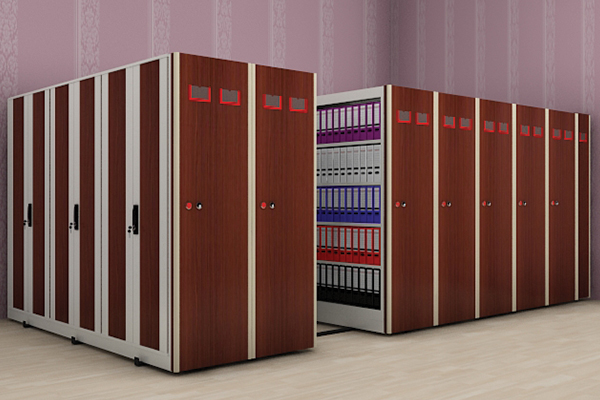
Rail archiving is an important principle in archive management, which provides the possibility of storing and maintaining documents related to an office for a long time in mass volume. In practice, some documents in a railway system can be very voluminous and require a storage system with different dimensions. In this article, we examine the dimensions of the railway archive and examine their importance in the selection and storage of documents.
Factors affecting the dimensions of the rail rack:
In order to use the rail racks in different places and for different applications, according to the goods that you need to archive or store, they can be implemented in various dimensions and sizes in order to use the maximum possible warehouse space for storage. suitable shelves for your goods or products.
The physical dimensions and technical specifications of the rail filing system, such as length, width, and height, typically refer to the structural elements of the system. Below, we will examine some dimensions of common types of rail filing in filing systems:
Capacity:
The capacity of a railway filing system refers to the amount of documents and goods that can be stored. This is usually measured in terms of volume or storage space.

Quantity:
A rack (unit or rack) in the rail filing system refers to a physical unit that has floors for installing and maintaining documents, items, goods and anything else that needs storage. The number of racks is directly related to the capacity of the entire system and its expansion capability.
Rack height:
The height of a rack refers to its physical height. Usually, in standard units that have 6 floors of storage space, the height of each unit is 240 cm. But other components are effective in determining the height of the system; Such as the height of the environment, the height of the documents to be archived, the required capacity, etc.
In environments where the height of the ceiling to the floor is less than 250 cm, units with a height of 210 cm are used.
Rail shelf depth:
The depth of movable shelves refers to its physical values in horizontal directions. This is usually determined by the physical size and dimensions of the storage documents and other related equipment.
Length:
The length of the rail filing rack refers to the length of a unit in its longer direction. In other words, by measuring the number of openings of a unit, its approximate length can be measured. This component is completely designed according to the dimensions of your space, which can be designed from 1 meter to 7 meters. Of course, it should be noted that the amount of capacity you need is also effective in determining the length of a system.
Choosing the right depth and length of the rail filing rack
These are just the standard dimensions of the types of rail filings that may be used in a rail filing system. Each rail filing system may have different dimensions depending on the needs and settings of the organization.
A depth of 60 cm is used for all types of rail and organizational metal racks, which are mainly used for the purpose of archiving and archiving documents, documents, folders and boxes. Also, the suitable dimensions of the rail file for documents and folders in hospitals and treatment centers for storing medical documents and files, the depth of the rail shelf is 60 to 70 cm is the most suitable choice.
Last word
In some cases, with similar applications but different storage methods, such as storage of triangular bins and files that are placed vertically, the depth of the rail archive may increase to 80 cm. If you need advice and guidance to choose the dimensions you need, contact Jahan Bayegan’s sales unit by phone through the phone number listed on the site or through internal messengers and Telegram.
The physical dimensions of the rail filing system, including the height, depth, width and length of the racks, are of great importance. These dimensions are related to the space in which the system is placed and determine the capacity, expandability and proper management of the system. According to the needs of the organizations, the railway archive should be designed and implemented based on the specified physical dimensions. Finally, paying attention to these dimensions will help organizations to use the most benefits of rail archiving and ensure the access and preservation of data effectively and continuously.
I like this post
Author:
Published date:
- April 22, 2024
- 14:30
Post views:
Comments:
- No Comments

